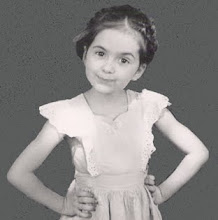After the recent disturbing article in the New York Times questioning the current relevance of children’s picture books I was pleased to see a film made for adults about picture books which reaffirms the value of children’s literature.
It was a documentary shown at UCLA, titled The Library of the Early Mind—a grown-up look at the art of children’s literature. The filmmakers came up with the idea of the film—and the title—after reading an article in The New Yorker in 2008 by writer Adam Gopnik. In it he analyzes the meaning of Jean de Brunhoff’s The Story of Babar. At the beginning of the article Gopnik writes, “With Bemelmans’s 'Madeline' and Sendak’s 'Where the Wild Things Are,' the Babar books have become part of the common language of childhood, the library of the early mind.” The film is being shown across the country in a series of 50 screenings, and will hopefully be made more widely available in future.
Edward J. Delaney, who was on hand after the film to answer questions , directed the film and co-produced it with Steven Withrow, his former student of communications and creative writing at Roger Williams University. Delaney has said they had wanted to make a film for people who might not have shown an interest in children’s literature, to introduce to them writers and illustrators speaking of the experiences that had led them to the creation of their books.
There were several memorable interviews. Caldecott winner David Small spoke of his painful childhood and of the healing power of art. Jack Gantos talked about his time in prison and of the theme of absolution that runs through his Rotten Ralph books. And Nancy Garden spoke of the successful lawsuit to keep her novel (Annie on my Mind, about a young lesbian girl) in school libraries after it was banned and burned. There were also interviews with editor Arthur Levine (speaking about Harry Potter) and Jane Yolen (on being a prolific writer), as well as Jeff Kinney, Lois Lowry, Chris Van Allsberg and some 35 other writers, illustrators and publishers. I believe the individual artist/writer statements were compelling in their own right, but for those in the audience familiar with their work the film was even more meaningful.
The film, originally 45 hours (!) was shortened to 88 minutes. Hopefully the discarded footage will be made into another film or series of films. I know I would like to see more.
Thursday, February 10, 2011
Subscribe to:
Post Comments (Atom)

















Thanks for reporting on this important film, Diane. I hope I get a chance to see it.
ReplyDeleteI hope to see it again, too. Love the title! let's watch for it on DVD.
ReplyDelete